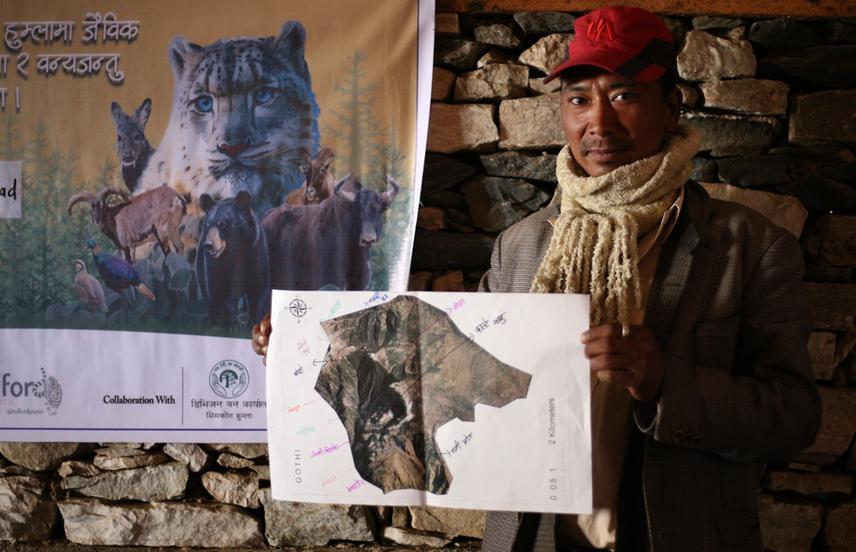Vidyaman Thapa
Other projects
Humla is the land of cultural and natural diversity, which is geographically divided into two regions, lower and upper Humla. Most of the research, conservation practices, and community outreach programs that were carried out in the past are focused in the upper region. The lower part of the district is equally important from a biodiversity and wildlife conservation perspective as this is home to some of the globally rare and endangered wildlife such as Himalayan black bear, Himalayan musk deer, dhole, etc. Because of its remoteness and lying outside the protected area network receives very little conservation priorities. Therefore, educating, strengthening local communities, and applying scientific approaches to initiate the foundation for the long-term conservation of biodiversity is very crucial in the present context.

One of the Participants from Fucha village presenting his map during the workshop. © Anup Raj Shahi and Sirjana Sizzu.
Being born and grown up in lower Humla, I have closely witnessed the nature, culture, and history of this region. Due to the remote geography and lack of cultivable lands, people living in the region are highly dependent on natural resources for their livelihood. People and wildlife often share common landscapes which leads to regular human-wildlife conflict. Such interaction in many cases involves retaliatory killings of big carnivores over livestock depredation. Besides that, Hunting, poaching, and trading of wildlife parts, haphazard collection of NTFPs, deforestation, forest fire, and climate change impacts are serious threats. This may lead to the local extinction of magnificent wildlife, loss of biodiversity, and negative impacts on local livelihood. People need awareness about the existing laws and policies and the importance of biodiversity. For that, we need to educate students, motivate youth, and involve locals, herders, and hunters in conservation programs.
This project will help to create baseline information on human-wildlife conflict and its associated livelihood issues. Besides, it will suggest to the locals about climate change adaptation and mitigation strategies and aware them of the impacts of forest fires and the importance of biodiversity conservation. The project will be of its first kind in the region focusing on community awareness and local-level conservation planning with the presence of local government. The project will also provide valuable information on the human-wildlife conflict dynamics in the area, forest fire, and climate change vulnerable communities which can be great information for state and central government. Integrating scientific tools through local participation and showing alternative ways of income-generating activities can reduce the risk of climate change and wildlife crime which can promote long-term conservation strategies.
Header: Vidyaman Thapa (PI), interacting with the participants during the workshop held at ward no. 2 Ripa Village, Humla. ©Anup Raj Shahi and Sirjana Sizzu.